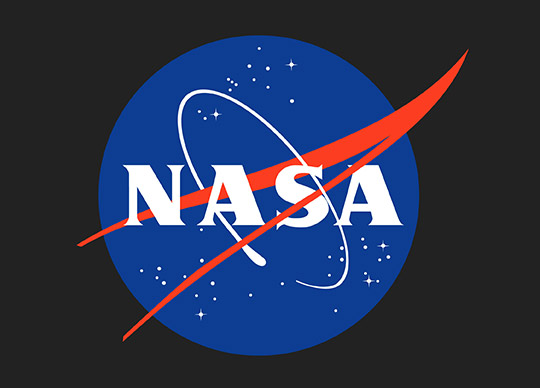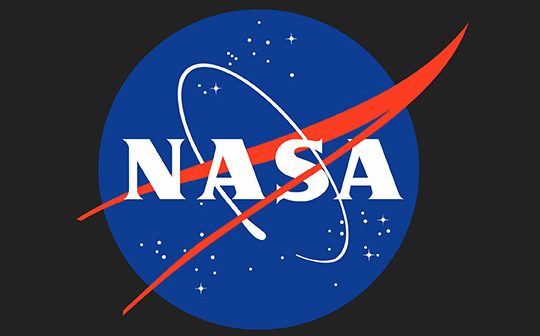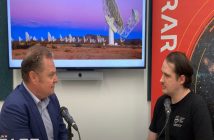
The world’s first full-scale planetary defence test – NASA’s Double Asteroid Redirection Test (DART) mission – is designed to strike an asteroid and adjust its course.
At approximately 9:15am (AEST) on Tuesday 27 September 2022, the 570-kilogram DART spacecraft is expected to collide with a small asteroid, Dimorphos, at a speed of approximately 6.44 km per second.
Dimorphos is 160 metres in diameter, roughly the size of the Great Pyramid of Giza, and orbits a larger companion asteroid, Didymos.
DART’s collision with Dimorphos should reduce the time it takes to orbit Didymos by just a few minutes.
The DART spacecraft will transmit images back to Earth as it approaches the asteroid, and the impact will be monitored by a cubesat, LICIACube, which separated from DART. From a safe distance, LICIACube’s cameras will record the impact, transmitting its pictures and other data back to Earth.
If successful, the DART mission will show that intentionally crashing a spacecraft into an asteroid is an effective way to change its speed and trajectory. What we learn could be applied in future to protect Earth from potentially hazardous asteroids.
Australia’s national science agency, CSIRO, manages the Canberra Deep Space Communication Complex (CDSCC), one of three stations around the world that make up NASA’s Deep Space Network. CDSCC has supported the DART mission since its launch in November 2021 and will receive the final signals from the spacecraft as it approaches and impacts asteroid Dimorphos. CDSCC will also receive images and data from the LICIA cubesat as it follows DART’s impact with the asteroid.
The European Space Agency’s New Norcia deep space tracking station in Western Australia, also managed by CSIRO, has been providing support to NASA’s Deep Space Network for the DART mission since May 2022. During the final stages of the mission, the 35-metre antenna at New Norcia will receive data from the spacecraft that will be used by scientists to estimate the mass of the asteroid, surface type and impact site.
Key points:
- The Didymos-Dimorphos system is being used to see if intentionally crashing a spacecraft into an asteroid is an effective way to change its course.
- While no known asteroid larger than 140 metres in size has a significant chance to hit Earth for the next 100 years, it’s estimated that only about 40 per cent of those asteroids have been identified to date.
- The DART demonstration has been carefully designed to pose no threat to Earth. At the time of impact, the two asteroids will be 11 million kilometres from Earth. The orbit of Didymos and Dimorphos never crosses the Earth’s orbit and are not a threat to Earth.
- CDSCC will receive the final signals from the DART spacecraft as it approaches and impacts asteroid Dimorphos. CDSCC will also receive images and data from the LICIA cubesat as it follows DART’s impact with the asteroid.
- CDSCC also performs observations of other near-Earth asteroids as part of NASA’s solar system radar program. These sonar-like observations better assess the types of asteroids that pass near our planet and refines our understanding of their orbits and whether they have minor moonlets, such as the double asteroid system of Didymos and Dimorphos.
- ESA’s New Norcia tracking station, operated by Australia’s national science agency CSIRO, has provided regular support to NASA’s Deep Space Network, tracking DART’s position.
- DART is a key test in a range of planetary protection missions that NASA and other space agencies want to perform to better understand any potential threats and how to deal with them. For example, ESA’s Hera mission will launch in 2024 and arrive at the Didymos asteroid system two years later to perform high-resolution visual, laser and radio science mapping of the asteroid moon and assess the consequences of the impact.
Live Coverage
NASA will provide a live broadcast of the final approach and impact via their TV channel (NASA TV) www.nasa.gov/live and on their YouTube channel https://youtu.be/4RA8Tfa6Sck
The online broadcast starts at 8am AEST on Tuesday 27 September 2022. NASA’s media channel will be showing the live camera feed from the spacecraft from 7:30am AEST: https://www.nasa.gov/multimedia/nasatv/index.html#media





